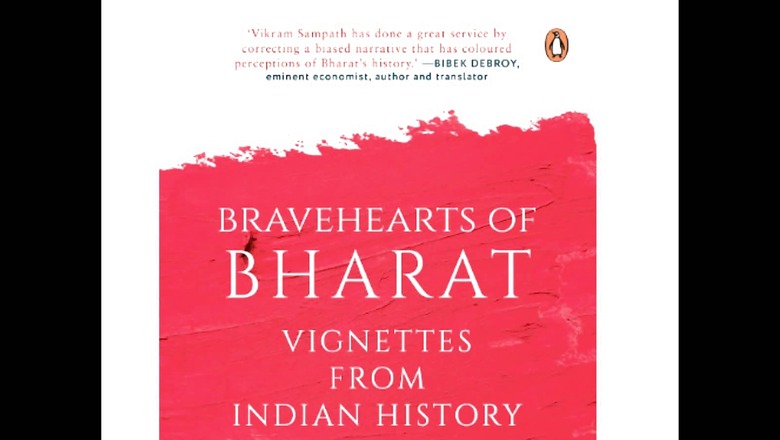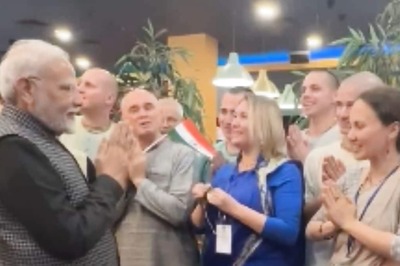
views
Naiki Devi remained undaunted about the possibility of an invasion of her kingdom by the marauding forces of Ghor. She decided to throw herself completely into strategising a well-conceived opposition to the invading hordes. She also opened diplomatic channels seeking support from neighbouring kingdoms for help including to the court of the chivalrous Prithviraj Chauhan who held sway over large parts of what is today’s Delhi, Haryana, Rajasthan and even parts of Punjab, Uttar Pradesh and Madhya Pradesh. However, unfortunately for reasons best known to them, none of these provinces, including that of Chauhan, seemed to share the foresight of Naiki Devi in forging a united alliance against the recurring menace. It was left for her to merely garner the support of the vassal states of the Chalukyas, the clans of the Naddula Chahamanas, the Jalor Chahamanas and the Arbuda Paramaras. Naiki Devi realised that in terms of size and strength this ragtag confederacy was no match to Ghori’s superior army. She had to plan out a strategy that would help her even against the odds that were stacked against Anahilapatan in this unequal battle.
Quite like her ancestor Bhimadeva I, who had drawn the forces of Sultan Mahmud of Ghazni to a battleground of his choice where the enemy was disadvantaged, Naiki Devi planned the conquest against the Ghorid army in the rugged terrains of Gadaraghatta. This was an area at the foothills of Mount Abu, near the village of Kasahrada (in today’s Sirohi district). This masterstroke was to prove advantageous to the Gujarat armies since the narrow hill passes and the terrain were completely unfamiliar to the invaders. When the armies of Muhammad Ghori finally made their way towards Kasahrada, the Queen made a frontal attack on them, with her young son accompanying her on her lap.
The Battle of Kasahrada of 1178 CE that followed was unique when an outnumbered army with its troops of war elephants managed to crush the force that had just vanquished the mighty Sultanate of Ghazni and thereafter the Sultans of Multan. It seems the weather, too, supported the forces of Naiki Devi as unseasonal monsoons put the Ghori army under further disadvantage from the position that they were camped in. Merutunga elucidates this rather poetically when he says: ‘Queen Naiki, the daughter of Paramardin, fought at a ghat called Gadaraghatta and conquered the king of the Mlechchhas by the aid of a mass of rain clouds that came out of season attracted by her virtue.’
The unexpected massive rout that befell his army shattered Muhammad Ghori’s pride — more so since this defeat was wrought on him by a woman whom he had vastly underestimated. He fled from the battlefield with a handful of bodyguards to save his life. Such was the rude jolt he received from this battle that he never again turned towards Gujarat to conquer it and instead eyed the more vulnerable Punjab, making his entry through the Khyber Pass the following year. The wound of Gujarat remained with Ghori for long and it was later left to his slave Qutub-ud-din Aibak to avenge his master’s humiliation, decades later in 1195–97. But thanks to the bravery and strategic assault of the fierce Queen of Patan, Gujarat remained invincible for Muhammad Ghori personally. Had this conquest been won by Ghori the whole of southern Rajputana and Gujarat would have gone under his control and the history of India might have taken a different course.
Naiki Devi’s epic victory finds echoes in the works of several local chroniclers. Someshwara’s works mention how the army of ‘Bala’ (infant) Mularaja had defeated the lord of Turushkas (Turkish people) and crushed the mlechchha (foreign) army. Another poet, Udayaprabha Suri, states rather exaggeratedly about what seemed like a casual child’s play. In his Sukrita Kirti Kallolini, he mentions that his mother gave Mularaja an army to play with and out of curiosity with that army he casually defeated Hammira (Sanskrit form of Emir) and his Turushka army, which (in order to protect themselves from the intolerable heat of the prowess of Mularaja) was dressed in robes that covered the soldiers from the head to foot. Arisimha, too, notes the victory of Mularaja’s forces over the Muslims. A Chakukyan inscription from the reign of Bhima II (Mularaja II’s brother and successor) states that even a woman could defeat the Hammira during the reign of Bala Mularaja. The inscriptions of his successors, too, describe Mularaja II as: ‘Paraabhoota durjaya Garjanakaadhiraja’ (‘Garjanaka’ according to Indologist scholar Bühler is a Sanskrit word to represent Ghazni and is intended to give the latter an etymological meaning, viz. the roarer).
Interestingly, the Muslim chroniclers, too, have unabashedly mentioned the rout that the Ghorid forces faced unexpectedly in Gujarat. The return to Ghazni seemed to have been extremely tortuous for Ghori’s forces, as these accounts seem to suggest. Minhaj-i-Siraj states that in the Islamic year 574 AH (1178 CE) Mu’izz ud-Din ‘marched an army towards Nahrwala by way of Uchchha and Multan. The Rae of Nahrwala… was young in years, but had numerous forces and many elephants, and when the battle took place, the army of Islam was defeated and put to rout, and the Sultan-i-Ghazi [Mu’izz udDin] returned again without accomplishing his designs’. Nizam udDin records that ‘the ruler of the country [Gujarat] gave him battle, and after a severe struggle the Sultan was defeated, and after much trouble, he returned to Ghazni and rested there for a short time’. The sixteenth-century chronicler Badauni writes: ‘Then in the year 574 A.H. proceeding by way of Multan he [Ghori] brought an army against Gujarat and suffered defeats at the hands of… the ruler of that country, and with great difficulty reached Ghazni and obtained relief.’ In his chronicle, Ferishta writes: ‘In the year 574 he again marched to Oocha and Multan and from thence continued his route through the sandy desert to Guzerat. The prince (a lineal descendant from Brahma Dew of Guzerat, who opposed Mahmodd Ghiznvey) advanced with an army to resist the Mahomedans and defeated them with great slaughter. They suffered many hardships in their retreat before they reached Ghizny.’ It was evident that this was a defeat that the Turks were to remember sourly for a long time.
Vikram Sampath is a well-known writer and historian. The above article is an edited extract from his new book, ‘Bravehearts of Bharat’ (Penguin).
Read all the Latest Opinions here




















Comments
0 comment